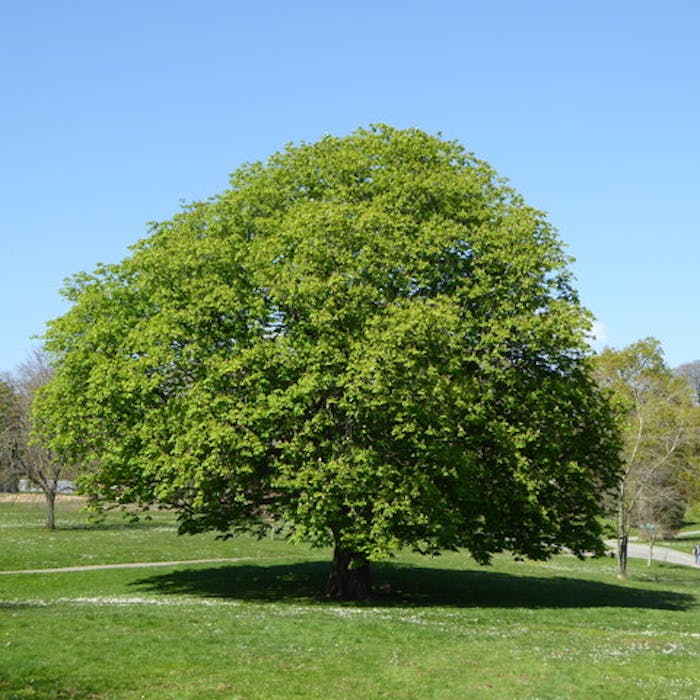
The Horse Chestnut - famed for its shape and its seeds
The horse chestnut tree was first introduced to the UK from Turkey in the late 16th century, and was widely planted as a distinctive shape in landscape gardens. Although not often found in woodland, it remains a familiar feature in parks, gardens and on village commons.
Appreciated for its imposing form, leaves and spring 'candelabra' shaped flowers, the tree is well-known for its distinctive seeds, formed within spiky cases, which are famed for their use in the game of conkers. The name 'conker' is also applied to the tree itself.
The first record of conkers being played is from the Isle of Wight in 1848. The game is played by two players, each with a conker threaded onto a piece of string: they take turns striking each other's conker until one breaks. The World Conker Championships (WCC) are held annually on the second Sunday in October in Northamptonshire. There's been a recent mini-revival in the sport in urban areas as something edgy and cool.
Conkers are also used in horse medicines, as additives in shampoos, and as a starch substitute. Chemicals extracted from conkers can be used to treat strains and bruises.
During the First World War, the government ran a campaign asking for people to collect horse chestnut seeds and to donate them. The conkers were then used as a starch for fermentation, producing the solvent cordite, which was used in military armaments.
Ravaged by moths and disease, the horse chestnut is now classified as vulnerable to extinction by the International Union for the Conservation of Nature (IUCN). About half face disappearing from the natural landscape. They have a life expectancy of up to 300 years.
Further reading
Links to external websites are not maintained by Bite Sized Britain. They are provided to give users access to additional information. Bite Sized Britain is not responsible for the content of these external websites.
